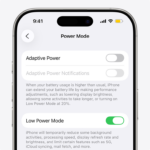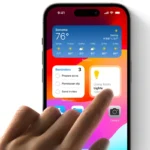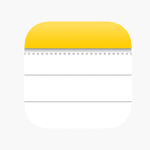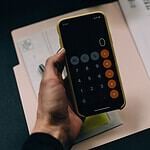Did you know your phone can work as a high-quality webcam? Both Android and iPhone users can save money and use what they already own for video calls, live streaming, and more. You can turn your smartphone into a webcam using apps like DroidCam, Camo, or built-in features on newer devices.
Setting up your phone as a webcam is easier than you might think. Apps like DroidCam work on both iOS and Android devices, connecting through USB or Wi-Fi to your computer. This setup works with popular video conferencing tools and streaming software like OBS Studio.
No extra hardware needed in most cases—just your phone and the right app! For iPhone users, newer iOS versions include built-in webcam features, while Android users can choose from several apps. This option saves money and often provides better video quality than budget webcams.
How To Use Your Android or iPhone As A Webcam
Whether you’re working remotely, streaming, or video chatting, using your Android or iPhone as a webcam can instantly upgrade your video quality compared to most built-in laptop cameras. Fortunately, modern smartphones are more than capable of serving as HD or even 4K webcams. Here’s how to turn your phone into a high-quality webcam for Windows or Mac.
Why Use Your Phone As a Webcam?
- Better video quality: Most smartphones have superior cameras compared to built-in laptop webcams.
- Cost-effective: No need to buy a separate webcam.
- Portability: Easily move and adjust angles.
- Wireless option: Many apps support wireless connections via Wi-Fi.
What You’ll Need
- A smartphone (iPhone or Android)
- A computer (Windows or Mac)
- USB cable (or Wi-Fi for wireless mode)
- A webcam app (see recommendations below)
For Android: Step-by-Step
Option 1: Using DroidCam (Windows/Linux/Mac)
- Download DroidCam:
- On your phone: Install DroidCam from the Google Play Store.
- On your PC/Mac: Download the client from https://www.dev47apps.com/
- Connect your phone:
- USB: Enable Developer Options > USB Debugging.
- Wi-Fi: Ensure both devices are on the same network.
- Open the app on both devices:
- The mobile app will show an IP address (for Wi-Fi).
- Enter this IP in the desktop app and click Start.
- Use it in your apps:
- Select “DroidCam Source” as your webcam in Zoom, OBS, Meet, etc.
For iPhone: Step-by-Step
Option 1: Using Camo by Reincubate (iOS & Windows/Mac)
- Download Camo:
- iPhone: Install Camo from the App Store.
- PC/Mac: Install the Camo Studio from https://reincubate.com/camo/
- Connect via USB:
- Plug your iPhone into your computer.
- Launch Camo on both devices.
- Grant permissions:
- Allow camera and microphone access.
- Select Camo in your video app:
- Works with Zoom, Teams, Skype, and more.
Note: The free version has limitations, but it’s still great for casual use. The paid version unlocks advanced controls and higher resolution.
Option 2: Continuity Camera (macOS Ventura+ and iOS 16+ only)
- Apple’s Continuity Camera lets you use your iPhone automatically as a webcam over Wi-Fi.
- Requirements:
- iPhone XR or newer
- macOS Ventura or later
- Same Apple ID on both devices
- Just open FaceTime, Zoom, or any app — your iPhone will appear as a webcam option.
Tips for Better Quality
- Mount your phone: Use a tripod or phone stand.
- Good lighting: Use natural light or a ring light for best results.
- Enable Do Not Disturb: Prevent notifications from interrupting your feed.
- Landscape mode: Gives a more natural webcam framing.
Best Webcam Apps (Free & Paid)
| App | Platform | Wireless | USB Support | Free Version | Notes |
|---|---|---|---|---|---|
| DroidCam | Android | ✅ | ✅ | ✅ | Best for Windows/Linux |
| Camo | iOS/Android | ❌ (free) / ✅ (paid) | ✅ | ✅ | High quality, pro features |
| Iriun Webcam | iOS/Android | ✅ | ✅ | ✅ | Simple and free |
| EpocCam | iOS/Android | ✅ | ✅ | ✅ | Owned by Elgato (great for OBS) |
| Continuity Cam | iOS/macOS only | ✅ | ❌ | ✅ | No extra app needed |
Key Takeaways
- Both Android and iPhone can function as webcams through free apps like DroidCam or Camo without buying new equipment.
- Phones can connect to computers via USB or Wi-Fi and work with video conferencing platforms and streaming software.
- Smartphone cameras typically offer better video quality than standard webcams, making them ideal for professional calls and content creation.
Understanding Webcam Basics
Turning your smartphone into a webcam is one of the easiest ways to upgrade your video quality for meetings, content creation, or livestreaming. With just a few apps and minimal setup, you’ll be camera-ready in no time — and looking better than ever.
Before using your phone as a webcam, it helps to understand what makes webcams work. These devices capture and transmit video data for various purposes, from casual chats to professional meetings.
Defining Webcam Utility
A webcam is a video camera that feeds or streams its image in real time to a computer or network. Originally built into laptop screens or as separate USB devices, webcams now include smartphone cameras when used with the right software.
Webcams serve many purposes. They’re essential for video calls with family and friends. Many professionals rely on them for video conferencing with colleagues. Content creators use webcams for live streaming to platforms like YouTube or Twitch.
The main function of any webcam is to capture a video feed that can be shared instantly. This differs from regular cameras that store footage for later viewing.
Components of a Webcam
Every webcam, including your phone camera, contains several key components that affect image quality:
- Lens – Focuses light onto the sensor
- Image sensor – Converts light into digital signals
- Microphone – Captures audio (often built-in)
- Processing hardware – Controls image adjustment
The most important factor in webcam quality is resolution. Higher resolution means clearer video. Most phones now offer HD video (1080p) or better, often surpassing dedicated webcams.
Camera settings like focus and exposure also matter. Phones excel here with their advanced auto-focus and light-adjusting abilities. Many phone webcam apps let you control these settings manually for the best video quality in any situation.
Preparing Your Devices
Before using your phone as a webcam, you need to set up both your mobile device and computer correctly. The right preparation ensures a smooth connection and better video quality.
Enabling USB Debugging on Android
To use your Android phone as a webcam, you’ll need to enable USB debugging first. This special mode allows your computer to communicate with your phone.
Start by opening your phone’s Settings app. Scroll down and tap on “About Phone” or “About Device.” Find the “Build Number” and tap it seven times quickly. You’ll see a message saying you’re now a developer.
Go back to the main Settings screen and look for the new “Developer Options” menu. Tap on it and find the “USB Debugging” option. Turn this on.
When you connect your phone to your computer with a USB cable, you’ll see a permission prompt on your phone. Tap “Allow” to give your computer access to your device.
Make sure your USB connection is set to “File Transfer” or “PTP” mode rather than just charging. This appears in your notification panel when connected.
Configuring Camera Settings on iOS
iOS devices work differently and don’t require developer options. Instead, focus on optimizing your camera settings for the best webcam experience.
First, make sure your iOS device is updated to the latest version. Go to Settings > General > Software Update to check. Newer iOS versions (iOS 12 and above) offer better webcam functionality.
Open your Camera app and check the video settings. Tap the resolution options (usually in the top corner) and select the highest quality your computer can handle. Most webcam apps work best with 1080p rather than 4K.
Turn on grid lines in your camera settings to help with framing. Go to Settings > Camera > Grid to enable this feature.
Allow camera access when prompted by your webcam app. Go to Settings > Privacy > Camera to make sure the app has permission to use your camera.
For the best results, disable features like “Attention Aware” that might turn off your screen during video calls.
Selecting the Right Webcam App
Choosing the best webcam app for your phone depends on your device type and specific needs. The right app can turn your phone into a high-quality camera for video calls, streaming, and recording.
Features of DroidCam
DroidCam stands out as a popular choice for Android and iPhone users. The app connects your phone to your computer through WiFi or USB, giving you a better camera for video calls.
The free version offers basic webcam functionality with decent video quality. For better results, DroidCam OBS integrates directly into OBS as a plugin, giving users total control.
Setup is simple:
- Download the app on both your phone and computer
- Connect both devices to the same WiFi network
- Enter your phone’s IP address in the computer app
- Select DroidCam as your webcam in your video app
The paid version removes ads and adds HD video, giving you a more professional look. DroidCam works with Windows and macOS, making it flexible for most users.
Capabilities of EpocCam
EpocCam by Elgato offers excellent features for iPhone users. It transforms your iOS device into a high-quality webcam for Zoom, Teams, and other video apps.
The app works with both Mac and Windows computers, making it versatile. Connection options include WiFi and USB, with USB providing the most stable connection.
Key EpocCam benefits:
- HD video quality
- Microphone access from your phone
- Zoom and focus controls
- Various video effects
Setting up EpocCam takes just minutes. Install the app on your phone and the driver on your computer. Once connected, your video apps will recognize your phone as a webcam option.
The free version has basic features, while the paid version offers more resolution options and removes watermarks. This makes EpocCam good for both casual and professional use.
Advantages of Iriun Webcam
Iriun Webcam provides a straightforward approach to using your phone as a webcam. It works with Android and iPhone devices and supports Windows, macOS, and Linux.
The app connects through WiFi, with no cables needed in most cases. This makes it easy to position your phone for the best angle during video calls.
Iriun stands out for several reasons:
- Completely free with no watermarks
- No time limits on usage
- 1080p video support
- Low latency connection
Setup is quick – just install the app on your phone and the client on your computer. When you open both, they connect automatically when on the same WiFi network.
The user interface is clean and simple, making it accessible for beginners. Iriun uses fewer system resources than some competitors, which helps your computer run smoothly during video calls.
Setting Up the Webcam Connection
Connecting your phone as a webcam requires choosing between wireless or wired methods. Each option offers different benefits depending on your setup needs and equipment availability.
Using Wi-Fi or Bluetooth Connection
Setting up a wireless connection between your phone and computer creates flexibility without cable clutter. To begin, you’ll need to download a webcam app on both your phone and computer.
Popular apps like Camo work across platforms. Once installed, open the app on both devices. The desktop app will automatically search for your phone on the same network.
For Wi-Fi connections, ensure both devices are connected to the same network. This provides the most stable wireless experience with higher video quality.
Bluetooth connections may offer easier pairing but typically deliver lower video quality. To connect via Bluetooth, enable it on both devices and pair them through your system settings.
Some apps like NDI HX Camera create a direct wireless link. These apps turn your phone into a network device that your computer recognizes as a webcam source.
Establishing USB Connection
USB connections provide the most reliable and highest quality video feed from your phone. To set up, simply connect your phone to your computer using a USB cable.
When connected, a notification will appear on your phone. Select the “webcam” option from this notification to enable webcam mode.
Android users may need to enable USB debugging in developer options. This setting allows your computer to access your phone’s camera. Turn on developer options in Settings, then enable USB debugging.
iPhone users should trust the computer when prompted. This grants necessary permissions for camera access.
Some apps require specific steps after connection. For example, with Camo, you must open both the phone and desktop apps after connecting via USB to establish the video feed.
For optimal performance, use the cable that came with your phone. These cables typically provide the fastest data transfer speeds needed for smooth video.
Integrating with Video Platforms
Once you set up your phone as a webcam, you can use it with popular video calling and streaming services. This lets you have better video quality without buying an expensive webcam.
Setting Up for Zoom and Skype
To use your phone webcam with Zoom, open Zoom settings and select the “Video” tab. Click the camera dropdown menu and choose your phone’s camera app (like DroidCam or EpocCam).
For Skype, go to Settings > Audio & Video. Select your phone camera from the camera options. Both platforms work similarly, making setup quick.
Test your camera before important video calls. Do this by starting a test meeting in Zoom or using Skype’s camera test feature.
Remember to place your phone at eye level for the best angle. A small tripod or phone stand helps keep it steady during long meetings.
Some phone webcam apps offer extra features for video calls like focus adjustment and brightness control. These can improve your video quality on both platforms.
Using Webcams with Discord and Twitch
Discord users can select their phone webcam in User Settings > Voice & Video. Choose your phone camera from the “Camera” dropdown menu. This works great for video chats with friends or gaming sessions.
For Twitch streaming, many creators use OBS Studio. Add your phone camera as a video source in OBS by clicking the + button under Sources and selecting “Video Capture Device.” Then choose your phone webcam.
Discord allows camera mirroring and background blur with some phone webcam apps. These features help create a more professional look.
Twitch streamers can use their phone as a second camera angle. This adds variety to streams without expensive equipment. Just add another camera source in your streaming software.
Phone cameras often have better resolution than basic webcams, giving your streams sharper image quality for viewers.
Advanced Webcam Features and Tips
When using your phone as a webcam, you can access many powerful features beyond basic video capture. These tools let you create professional-looking video with better quality and special effects.
Adjusting for Image Quality
Getting the best image quality starts with good lighting. Place a light source in front of you, not behind, to avoid looking like a shadow. Many phone camera as webcam apps let you adjust brightness, contrast, and saturation with simple sliders.
To improve your video quality, check these settings:
- Resolution: Choose 1080p for clear video calls
- Focus: Tap to focus on your face rather than using auto-focus
- Exposure: Lower this in bright rooms, raise it in dim settings
Many apps like Camo Studio let users manually adjust these settings. You can even flip or rotate your image if it appears upside down or backward.
Battery drain can be an issue. Keep your phone plugged in during longer calls, and close background apps for better performance.
Exploring Special Functions
Modern phone webcam apps offer amazing special effects. The iPhone’s LiDAR sensor creates 3D face maps for superior tracking without showing your actual face.
Popular special functions include:
| Feature | What It Does |
|---|---|
| Green Screen | Replace backgrounds without physical screens |
| Night Vision | Improve image in low light |
| Virtual Camera | Add filters and effects in real-time |
| Screen Recording | Capture your call for later review |
Low latency mode reduces delay between movement and what appears on screen. This is crucial for presentations where timing matters.
For Android users, the Camo Studio app works well for streaming and offers many advanced features. iOS users can use the built-in Continuity Camera feature with recent macOS versions.
Remember to test these features before important calls. Some effects may require more processing power and could cause lag on older devices.
Enhancing Privacy and Security
When using a phone as a webcam, privacy and security should be top priorities. Smart protection measures can prevent unauthorized access and keep your video feeds safe.
Secure Webcam Setup
Setting up a secure webcam connection starts with choosing the right app. Look for apps with end-to-end encryption to protect your video stream. Many quality apps require passwords or generate unique access codes for each session.
Always update your webcam apps regularly. Updates often contain security patches that fix vulnerabilities hackers might exploit.
For extra security, consider using a dedicated home network for your webcam devices. This separates them from your main network where you handle sensitive information.
When setting up an IP webcam, avoid using default passwords. Create strong, unique passwords that combine letters, numbers, and symbols.
Controlling Webcam Access
Android offers a Privacy Dashboard that shows which apps accessed your camera recently. Check this regularly to spot unauthorized access.
Both iPhone and Android let you review and revoke camera permissions. Go to your phone’s settings and check app permissions often to maintain control.
Consider apps with physical indicator lights or on-screen notifications that activate when the camera is in use. These visual cues alert you if your camera turns on unexpectedly.
Some advanced mobile camera privacy features include automatic timeout functions that stop recording after periods of inactivity. This prevents unintended long recordings.
For complete peace of mind, disconnect your webcam when not in use or cover the lens with a physical cover.
Addressing Common Webcam Challenges
When using your phone as a webcam, you might face some issues. These problems often relate to connection stability and video quality, but most can be fixed with some simple steps.
Troubleshooting Connection Issues
If your phone webcam isn’t connecting, first check that both devices are on the same WiFi network. This is the most common problem with wireless setups.
Try these quick fixes:
- Restart the webcam app on your phone
- Check your computer’s firewall settings
- Make sure you entered the correct IP address
- Restart both devices
For Android users, switching from WiFi to a USB connection often solves most problems. USB provides more stability for your video feed.
If your connection keeps dropping, try moving closer to your router or using a mobile hotspot instead of home WiFi. Some users find that turning off other WiFi devices helps reduce interference.
Improving Webcam Resolution and Frame Rate
Getting HD video quality from your phone camera requires some tweaking. Most phones can deliver better video than standard webcams when set up correctly.
Try these quality improvement tips:
- Use good lighting (natural light works best)
- Clean your phone’s camera lens
- Set the resolution manually in your webcam app
- Close other apps on your phone to free up resources
Some webcam apps let you adjust frame rate settings. For meetings, 24-30 fps works well. For smoother video, especially for streaming, aim for 60 fps if your phone supports it.
Battery drain is common when using your phone as a webcam. Connect to a power source during longer sessions. This helps prevent overheating and maintains consistent video quality.
Exploring Content Creation and Streaming
Your smartphone can replace expensive webcams for creating videos and streaming online. Modern phones offer high-quality cameras that work well for many content creation needs.
Optimizing Phone Webcams for Content Creators
When using your phone as a webcam for content creation, proper setup makes a big difference. EpocCam allows both iPhone and Android users to convert their phones into high-definition webcams. This app works well with OBS Studio for professional live streaming.
Good lighting is essential for quality video. Natural light works best, but ring lights can help in darker rooms.
For stable footage, invest in a small tripod or phone mount. Shaky video looks unprofessional during video conferences or streams.
Both iPhone and Android phones can create excellent video content without breaking the bank. Some tips for better results:
- Use the rear camera when possible (it usually has better quality)
- Clean your lens before recording
- Set your phone to “Do Not Disturb” mode
- Connect to power for longer sessions
- Use WiFi rather than cellular data for stability
Content creators should test their setup before important calls or streams. This ensures the virtual camera works properly with your chosen software.
Frequently Asked Questions
Turning your smartphone into a webcam offers flexible solutions for better quality video calls. These common questions address setup methods for different devices and connection options.
How can I set up my iPhone to function as a webcam on a Windows 10 system?
To use your iPhone as a webcam on Windows 10, you’ll need to install special software on both devices. Apps like EpocCam work well for this purpose.
First, download the EpocCam app on your iPhone from the App Store. Then install the companion driver software on your Windows 10 PC.
Make sure both devices are connected to the same Wi-Fi network for wireless use. For more stable connections, you can use a USB cable to connect your iPhone to your computer.
What are the steps to use an Android device as a webcam for a PC?
Android phones can easily become webcams for PCs using apps like DroidCam. Start by installing the DroidCam app on your Android device from the Google Play Store.
Next, download and install the DroidCam client on your PC. Both devices need to be on the same Wi-Fi network for wireless connection.
Users with Android 14 or 15 can connect their phones directly as webcams without additional apps. Just plug your phone into your computer with a USB cable and select it as a webcam input in your video conferencing software.
Is it possible to connect a phone camera as a webcam via USB for video streaming on a computer?
Yes, using a USB connection is often the most reliable way to use your phone as a webcam. This method provides more stable video quality and reduces lag compared to wireless options.
For iPhone users, apps like EpocCam support USB connections. Simply connect your phone to your computer with your charging cable and select “USB Connection” in the app.
Android users can use apps like DroidCam or native webcam support on newer Android versions. The USB connection usually requires enabling developer options or USB debugging on your phone.
What software is needed to turn my iPhone into a webcam for Windows 11?
To use an iPhone as a webcam on Windows 11, you need third-party software like EpocCam, Camo, or iVCam. These apps bridge the gap between iOS and Windows systems.
Install your chosen app on your iPhone and the companion software on your Windows 11 PC. For example, with EpocCam, you’ll need both the iOS app and Windows drivers.
The software creates a virtual webcam device on your computer that video conferencing apps like Zoom, Teams, or Google Meet can detect and use just like a regular webcam.
How can I use my Android phone’s camera for video calls on a Windows 11 device?
For Android phones on Windows 11, install an app like DroidCam or Iriun Webcam on both devices. These create a connection between your phone camera and computer.
Launch the app on both devices and follow the setup instructions. Most apps will show a QR code on the PC that you can scan with your phone for quick pairing.
Recent Android devices with Android 14 offer built-in webcam functionality. Simply connect your phone via USB, allow the connection permissions when prompted, and select it as a camera in your video apps.
Are there any cross-platform solutions to use a smartphone as a webcam across different operating systems?
Yes, several apps work across multiple platforms. Camo supports iPhone and Android phones as webcams for both Windows and Mac computers.
Iriun Webcam is another versatile option that works with iOS and Android devices as well as Windows, Mac, and Linux computers.
Web-based solutions like Droid Cam Web also offer flexibility, requiring just a browser on your computer and the app on your phone. This means they work regardless of your computer’s operating system.







